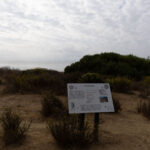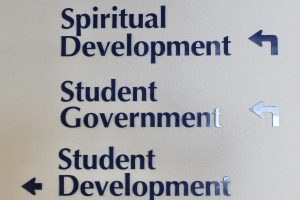The smell of tamales and refried beans, coupled with the sound of sonorous salsa music, greeted students as they walked into the ARC. Latin American flags hanging from the walls billowed in the wind sweeping in from the gusty rainstorm outside as a steady throng of students hummed through the colorful booths lined up inside. It was a flurry of excited chatter, exotic foods and, most importantly, cultural exchange.
The Association of Latin American Students (ALAS) hosted its annual Carnaval Latino in the ARC Wednesday, an event with booths representing each country in Latin America as part of a nationwide celebration of Hispanic Heritage Month which ends Oct. 15.
The main countries highlighted were Nicaragua, El Salvador, Honduras, Costa Rica, Guatemala, and Mexico, but other countries represented by students who either came from that part of the world or wanted to go there, included Paraguay, Cuba, Chile, Bolivia, Peru, Colombia, Puerto Rico, and Ecuador. The event draws a crowd of roughly 300 people each year.
This year, the carnaval took place in the ARC due to inclement weather. Students sold food items such as tamales and panes dulces, and Guatemalan beverages such as horchata and Jamaica. For the first time in its six-year run, the event also featured live Aztecan dancers and pupusa making.
PLNU senior Yesenia Gomez, president of ALAS, said that the Carnaval allows students to share cultural experiences or learn about a culture foreign to them.
“The carnival brings students of Latino and non-Latino backgrounds together to share in an exchange of culture. The goal is to let people experience the food, history and ethnic varieties of our Latino students here at PLNU,” said Gomez.
Freshman Ellen Maley was in charge of the Chile booth, which shared chips, refried black beans and facts about the country’s politics and demographics. Maley attended the Club Fair during the first week of classes and that got her connected to ALAS. She went to a Spanish immersion school from first grade through high school, and wanted a way to continue her involvement in Latin American cultural activities.
“The aim is to inform people about the differences in the cultures of Latin America, and that not all Hispanic people here are necessarily from México” said Maley.
Junior Israel Romero manned the Colombia booth and explained what he enjoyed most about this event.
“It’s all about food, fun and smiles,” he said. “It gives people the opportunity to have community with the Hispanic population.”
Romero has been involved with ALAS since his freshman year, but says that the club still looks for opportunities to publicize events for students because they’re not very well known.
“The only issue is that the club is pretty hidden. It’s not very well publicized,” he said.
Senior Megan Zuttermeister also recognized this issue.
“You don’t really know about stuff like this unless you are Latino. But, this year the Carnaval was more advertised than last year, with the fliers on Caf Lane and the ad in the Toilet Paper,” she said.
According to Zuttermeister, each year progresses toward something better than before.
“Last year’s Carnaval was really fun, and this year they have some new things, which makes it even better,” said Zuttermeister.
Freshman Caroleana Kuaterchuk greeted attendees from the El Salvador booth. Doling out Salvadoran cookies while answering questions about the economy, history and modern-day cultural life of El Salvador, she explained that she, too, became involved with ALAS as a result of the Club Fair.
“This is a really cool way to experience other cultures and help connect us as a student body,” she said.
Freshman Tracye Zelada, a member of ALAS who ran the Peru booth, joined the club this year after first hearing about it through Encuentro, a program that brings Latino students to PLNU for a weekend to explore its campus and community.
“I am a first-generation American, because most of my family lives in a small town near San Salvador, El Salvador,” she said.
Zelada hopes that students would be open and curious enough to come to these events even without a base knowledge of these cultures.
“It’s about collaborating as far as we can without everyone on campus being able to speak Spanish. We can’t tell anyone to come here, but we want to accept everyone who wants to come and learn about our different ethnicities and cultures,” she said.








